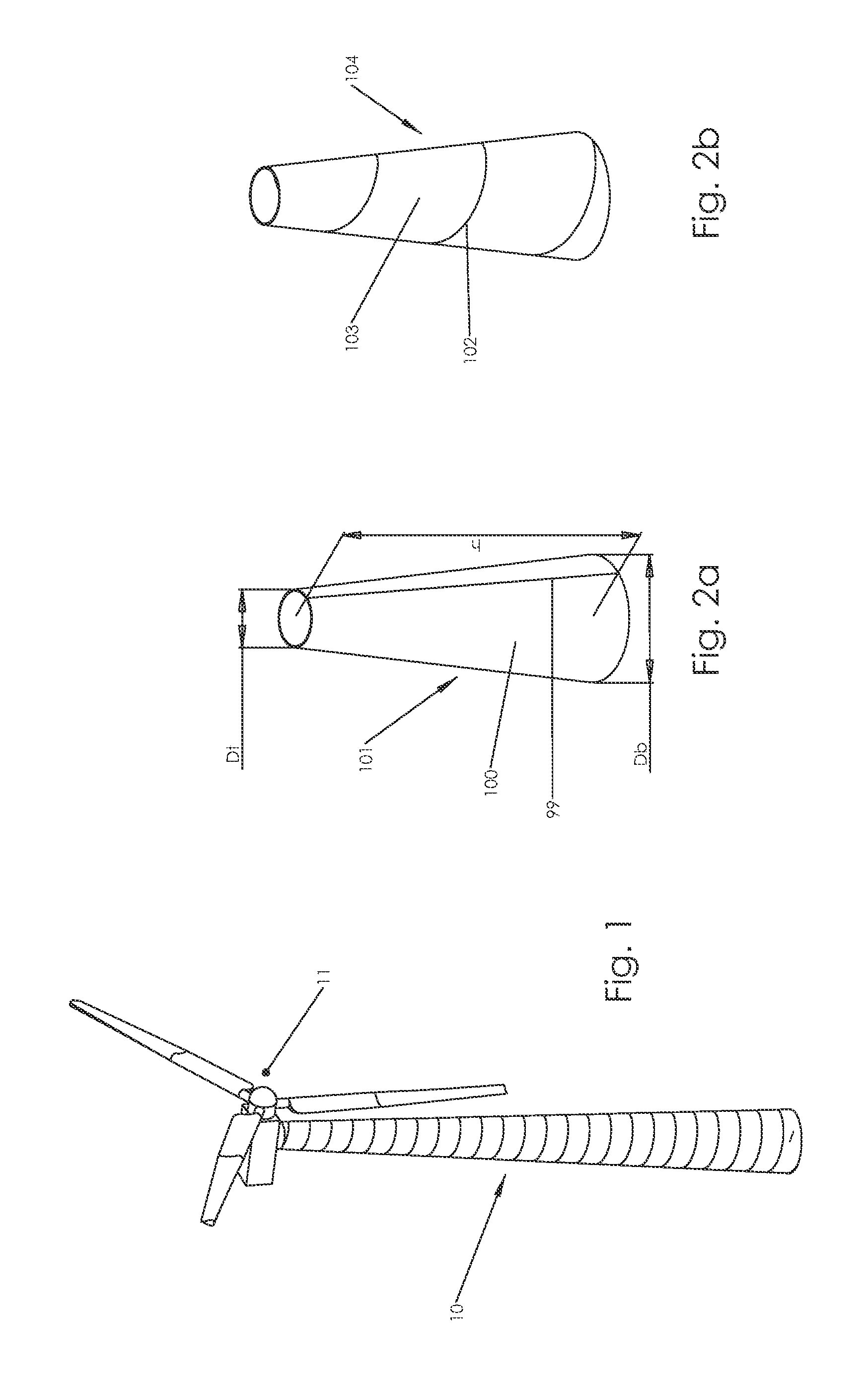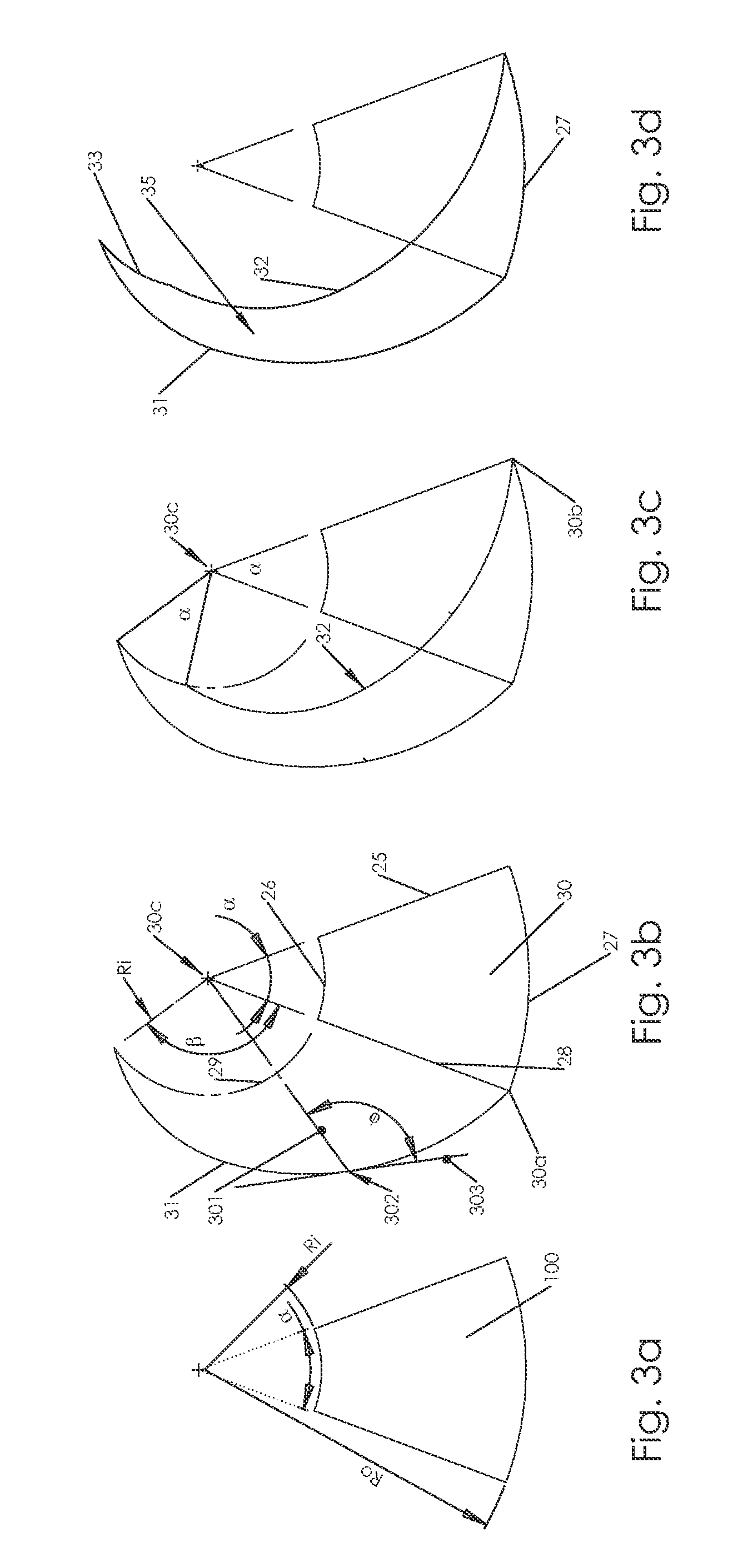Tapered Spiral Welded Structure
a technology of welded structure and tapered spiral, which is applied in the direction of manufacturing tools, metal working apparatus, transportation and packaging, etc., can solve the problems of inability to produce the required conical structure without, the existing spiral welding technology is incapable of producing the required conical structure, and the process is impractical to achieve on site, so as to achieve the effect of large structur
- Summary
- Abstract
- Description
- Claims
- Application Information
AI Technical Summary
Benefits of technology
Problems solved by technology
Method used
Image
Examples
Embodiment Construction
FIG. 1 shows a wind turbine 11 atop a tapered tower 10. Such towers are typically manufactured in segments from axially welded steel plate that are transported to site and assembled. This necessitates large bolted flange connections every 20 meters or so and the largest diameter that can be transported is typically 4-4.3 meters. By forming the sections on-site, diameters of 5 meters or more could be formed. Since the bending strength goes with the cube of the diameter, even a 10% increase in diameter represents a 33% increase in strength for only a 10% increase in weight if the same wall thickness structure is used. Going from a 4 meter diameter structure to a 5 meter diameter structure increases the strength by almost 100%. Hence there is a clear need to be able to make large conical towers on site so they can be used to support machines such as wind turbines shown in FIG. 1.
As discussed above, however, there has not been a simple and effective way to accomplish manufacturing of a ...
PUM
| Property | Measurement | Unit |
|---|---|---|
| diameter | aaaaa | aaaaa |
| diameter | aaaaa | aaaaa |
| diameter | aaaaa | aaaaa |
Abstract
Description
Claims
Application Information
 Login to View More
Login to View More - R&D
- Intellectual Property
- Life Sciences
- Materials
- Tech Scout
- Unparalleled Data Quality
- Higher Quality Content
- 60% Fewer Hallucinations
Browse by: Latest US Patents, China's latest patents, Technical Efficacy Thesaurus, Application Domain, Technology Topic, Popular Technical Reports.
© 2025 PatSnap. All rights reserved.Legal|Privacy policy|Modern Slavery Act Transparency Statement|Sitemap|About US| Contact US: help@patsnap.com



